Columbine is one of the sweetest flowers in spring gardens. Columbine blooms resemble jester’s caps, and their ability to attract hummingbirds makes bird watchers happy. The foliage of this herbaceous perennial resembles clover. Almost all the flowers have spurs: long, narrow stripes running horizontally from the back of the blossoms. In addition to attracting hummingbirds and bees, these bell-shaped flowers are also popular among gardeners.
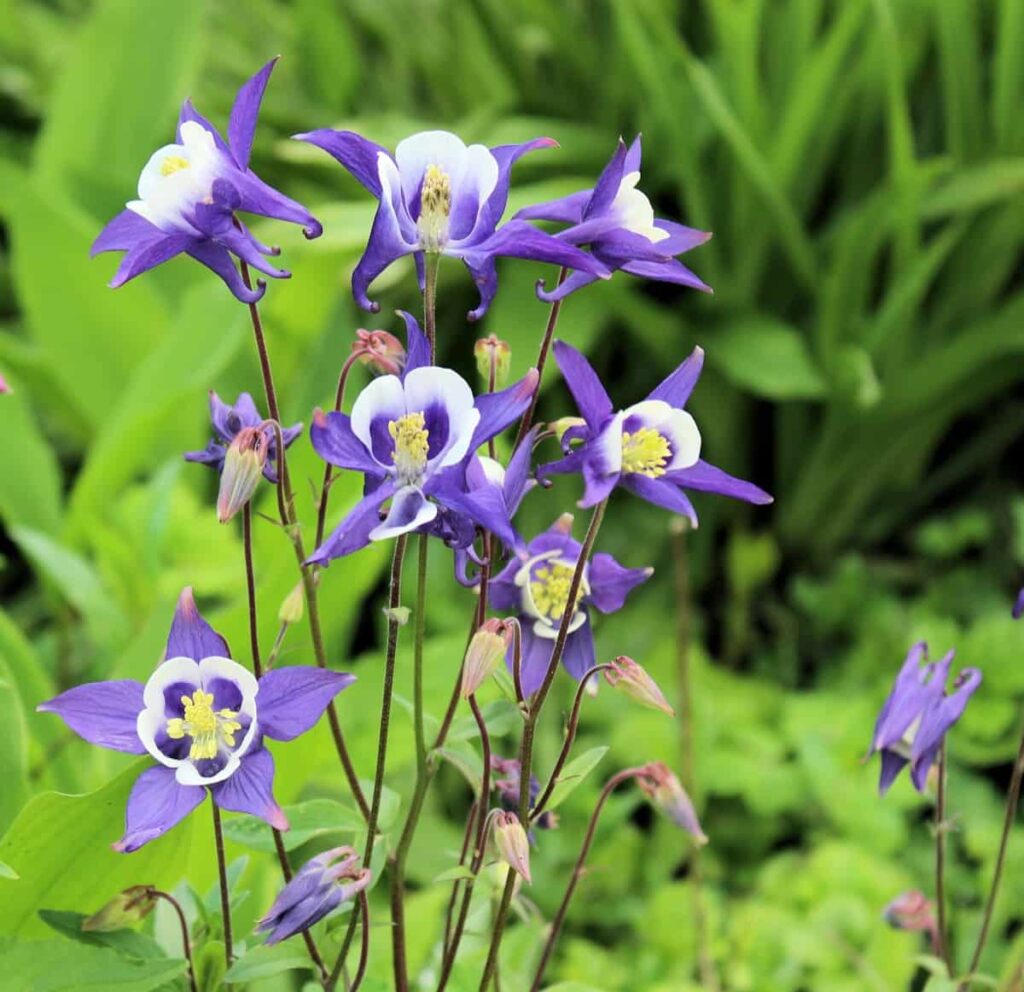
It is usually planted in the early spring when the weather is warm. Beginning in mid-spring, established plants typically bloom for about four weeks. This way, mid-spring blooms bridge the gap between the peak gardening season and early spring bulbs. Despite their short lifespan, these Columbines will self-sow and soon form a colony of plants if you allow the flower heads to go to seed instead of deadheading them.
Germination occurs between 20 and 30 days after seeds are sown, and they grow moderately. There is a toxic substance in Columbine plants that is harmful to humans. Several native species are grown in gardens. The plant has been cultivated for many years, resulting in dozens of hybrids and cultivars, with more being developed yearly. A crossbreeding plant produces self-seeded volunteers with an entirely different appearance when two plant varieties are planted together.
How to grow Columbine flowers
Types of Columbine
Several cultivars of Columbine have been developed especially for American gardens, so the market is abundant. When choosing a flower, you should look for unusual characteristics such as pest resistance, double petals, varying spur lengths, and upward-facing blossoms.
Blue Star
Its upward-facing flowers have slender spurs and contrasting white centers with cerulean blue outer sepals. Their stunning presence makes the garden a focal point. These will make a festive spring-to-summer welcome to your home if planted these plants near an entryway. This plant can reach a height of about 30 inches, and its blossoms measure three to four inches in diameter. In spring and summer, there is a blooming period.
McKana Giant
Overdelicate, fern-like foliage, the McKana Giant Columbine blooms with nodding, bi-colored flowers. With these easy-to-grow plants, you can expect vibrant color combinations and pollinator visits in late spring and early summer. After the flowers fade, the foliage remains lush and healthy throughout the season.
Deer and rabbits are not attracted to this variety. With eye-catching long spurs, the upward-facing flowers appear to be painted in shades of purple, red, white, yellow, and bi-color arrangements. The diameter of each varies between two and three inches. The blooming season lasts from spring to summer.
In case you missed it: How to Grow Rajnigandha (Tuberose): Soil, Propagation, Flowering Season, Planting, and Care
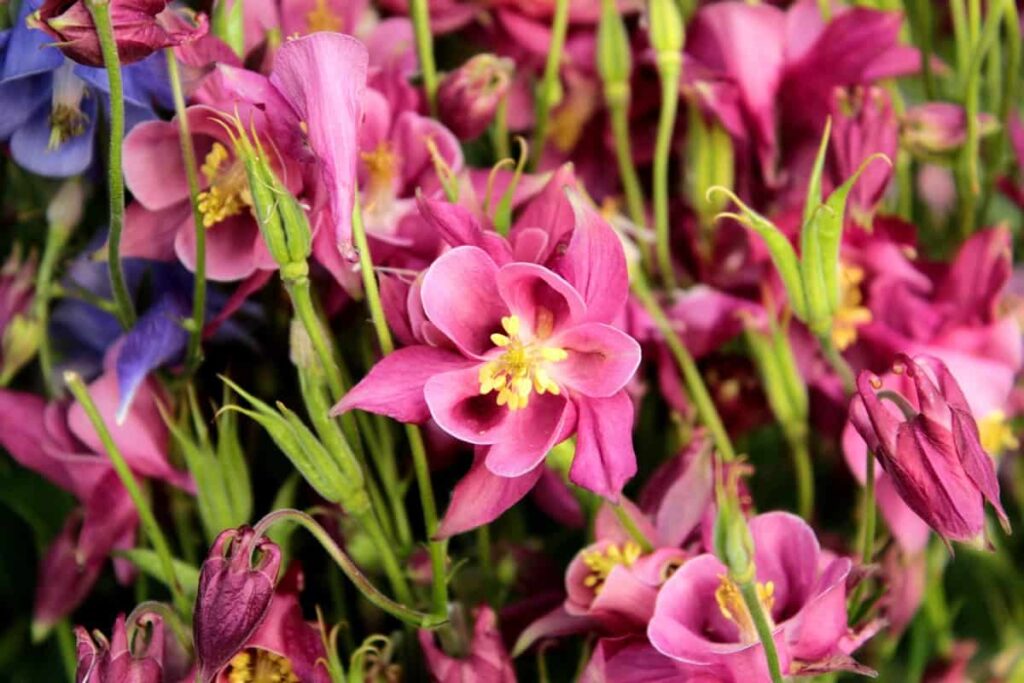
Swan burgundy and white
This cultivar features deep burgundy sepals and long, velvety spurs, while its white centers are accented with the same saturated burgundy hue. The flowers measure 2 to 3 inches in diameter. This variety blends well with companion plantings with a moderate height of 18 to 20 inches. Both pastels and bold-toned flowers look good with their color scheme. The blooming season runs from spring to summer.
Wild Columbine
Columbine wild, also known as Eastern red Columbine, is a native species of Canada. It is common for wildflowers to have smaller flowers and shorter heights compared to hybrids. Aside from this, their heads are angled downward rather than outward, with spurs pointing upward. The flowers of Eastern red Columbine range from one to two inches in diameter. With contrasting yellow centers, the sepals are red.
Additionally, the spurs are red and much shorter than those on hybrids. The height ranges from one to two feet. As its nodding blossoms are so few, planting this variety of plants is the only way to catch the attention of this sweetheart, unless perhaps you’re gardening in a small space. These native species bloom in the spring.
How to propagate and grow Columbine from divisions
Seeds or division are the best methods for propagating Columbine. Early spring or summer are the best times to sow Columbine seeds in the garden. Columbine can be divided every two or three years in the spring. Divided plants remain vibrant and vigorous for many years. The roots of Columbine are deep, so if you need to divide it, dig down. To propagate by division, follow these steps:
- A shovel or spade, as well as a sharp knife, will be needed.
- The plant should be loosened from the ground by digging deeply around it. Make use of a spade or shovel to do this.
- Remove the plant from the ground, careful not to break up the soil around the roots.
- Plants should be divided and replanted as quickly as possible using a sharp, sterilized knife. Be careful not to disturb the soil around the roots.
- Using the same planting hole, replant one division, and backfill the hole with well-draining soil.
In case you missed it: India Flower Planting Calendar: Month-wise Garden Sowing Chart, Dates Guide for Winter, Summer, and Rainy Season
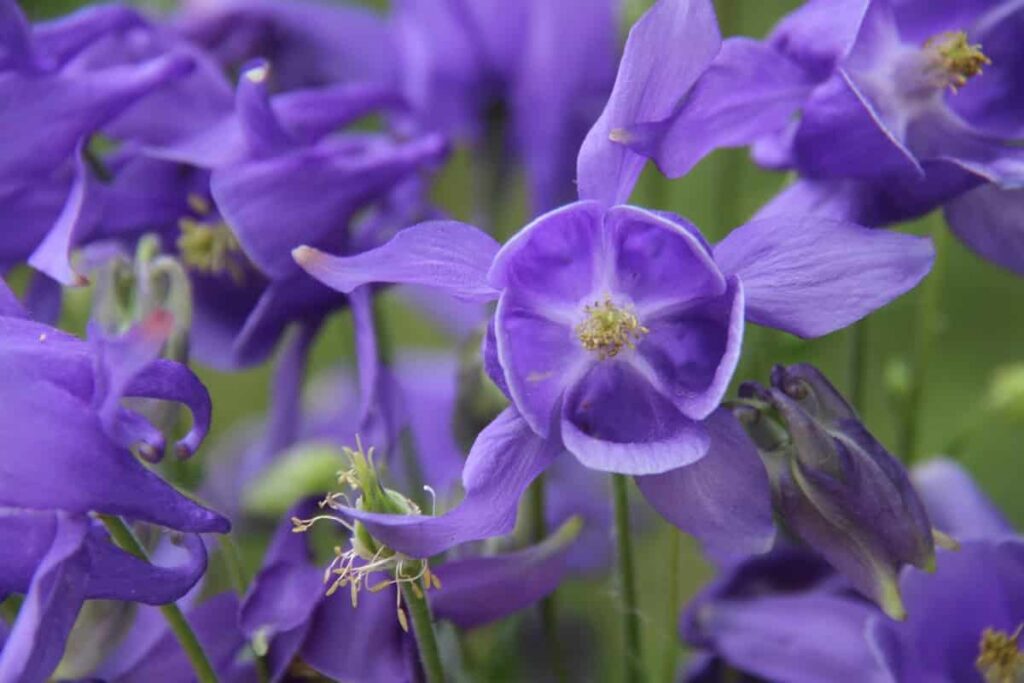
How to grow Columbine from seed
The easiest way to grow Columbine is to propagate it from collected seeds. When the flowers have faded and dried up, harvest the ripened seed pods and break them open to collect the shiny black seeds. Over the winter, store them in the refrigerator. Germination occurs after three to four weeks of cold, so they are ready to sow when the time comes. They can be planted in the garden the following spring. By not deadheading spent blooms, you can let your Columbines reseed naturally.
Start the seeds indoors in moist soil by laying one to two Columbine seeds in the soil mix and covering lightly with soil. Make sure they are located in a sunny area. Three to four weeks after sowing, the seedlings will emerge. Start seedlings indoors and gradually acclimate them to garden conditions by setting them outside for an hour or so the first day, two the next, and so forth, for three or four days total, before transplanting them. Harden off the plants gradually after they reach three to four inches in height, then plant them outdoors about ten inches apart.
Columbine care
It is easy for Columbines to reseed themselves. The best way to save money on gardening is to start plants from seed instead of buying them at the nursery, although you will have to wait a year to see flowers. There will be plenty of self-sown replacements if you do not deadhead. The plants do not tolerate hot, full sun well, so they decline in the summer.
The soil should be well-drained, medium moist, and well-drained. Despite this, Columbine plants are drought-tolerant once they have established themselves. Plants like these are perfect for rock gardens and woodland gardens. Its attractive foliage is often used in cottage gardens, making it suitable as an edging plant.
Type and how much sunlight is required for growing a Columbine
Plants of the Columbine family will grow well in full sun to partial shade; however, they prefer partial shade the most. Finding a spot that gets gentle morning sunlight and is away from the harsh afternoon sun is ideal. Alternatively, they can be grown under dappled shade as long as more sunlight is available than shade.
While these plants can tolerate full sun in cooler regions, they shouldn’t be exposed to direct sun for more than six hours a day. The plants struggle in full sun in warmer areas, particularly in summer, as they do not handle excessive heat well. Without sunlight, these plants cannot flower successfully, and their growth will be significantly slowed. The more sunlight they receive, the more flowers they will produce.
Required soil type and preparation for Columbine
As long as the soil is not heavy clay, Columbine can be planted almost anywhere. For best results, plant Columbine in well-drained soil with a neutral to slightly acidic pH. Add some compost to the soil before planting to provide rich organic matter. They need to have sandy or loamy soil because they need good drainage. Root rot is caused by dense clay soils that hold too much moisture.
Compost and sand can be added to clay soils to improve drainage before planting to prevent this problem. Although Columbine grows better in sandier soils than clay, it will grow almost anywhere. The plant has many benefits that make it a favorite among gardeners. Some fussier plants won’t grow in poor-quality soil, which is where it’s best suited. Keeping the soil moist and well-draining will make the plants happy.
How and when to water your Columbine
It needs a moderate amount of moisture in the soil, so apply water when the top one or two inches dries out. Maintain an even moisture level in the soil as young plants become established, but never let it get soggy. Plants that are established only need watering once a week. Summer is the perfect time to mulch your plants to conserve water.
You will unlikely have to water the plants frequently if you live in an area or season with high rainfall. When planted in full sun, these plants will require extra watering in summer as the heat sets. Watch out for wilting foliage and drooping stems that indicate a lack of water. These plants are quite susceptible to rot if overwatered, especially in dense soil.
In case you missed it: How to Make Rose Plants Bushy and Flowers Bigger: Propagation, Fertilizers, Pruning, Planting, and Care
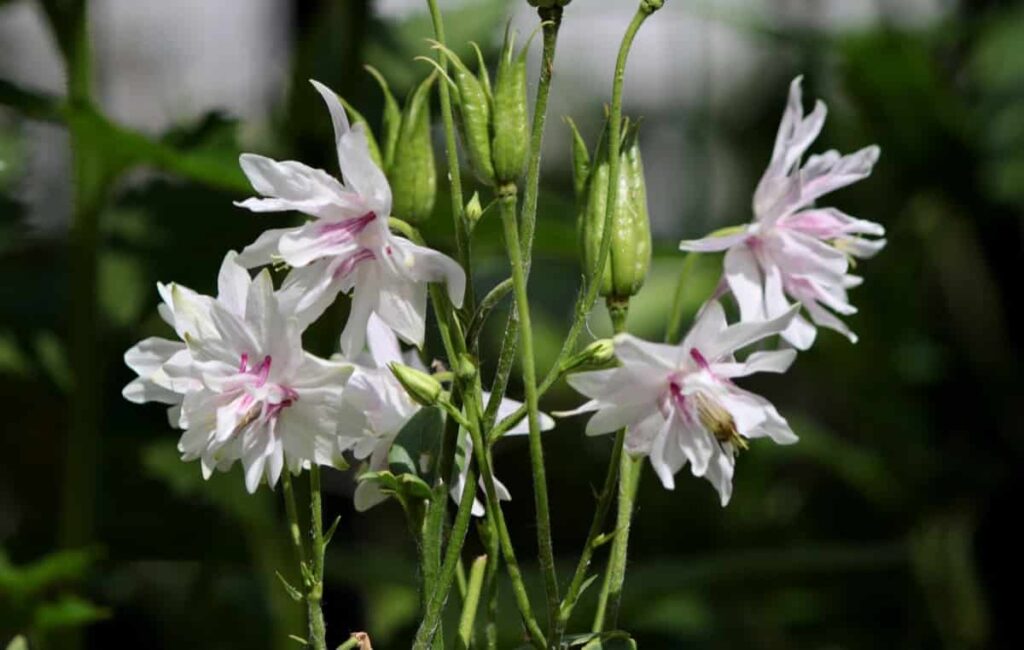
Temperature and Humidity for growing Columbine
Despite its cold tolerance, Columbine thrives in the cold. Despite a few touches of frost and chilled soil over winter, it emerges again the following spring. The plant is not very long-lived, however, and should be removed in the fall if planted as an annual. In most cases, Columbine only lasts two or three seasons before it needs to be removed. Warm weather is also no problem for it. It prefers milder climates, especially in summer, over excessive heat. To prevent stress, keep the plant well-watered and protect it from harsh sunlight during hot weather.
Fertilizer application for Columbine
For healthy foliage and better blooms, apply a liquid fertilizer during the growing period from spring to fall. This plant must receive phosphorus to develop healthy roots. Use a phosphorus-rich fertilizer, such as 5-10-5 NPK, instead of nitrogen-rich fertilizers that affect flower production.
Pruning for Columbine
The addition of compost should be sufficient to improve soil structure and nutrient availability in particularly poor-quality soils. It is ideal for adding compost on top of the soil, as it acts as a mulch that protects the soil from excessive temperatures and inhibits weed growth. Compost can also be mixed into the soil before planting. As a result, you won’t need to fertilize the plant often over the season since it will receive the nutrients it needs. You can use a slow-release fertilizer in early spring if your plants are not performing expected, with few flowers or sparse foliage.
You can also apply a liquid fertilizer once a month during flowering. It is recommended to use slow-release fertilizers instead of liquid fertilizers because they do not improve soil structure and must be applied more often. Using these plants as biennials is best since they only last a few seasons. If Columbines are not flowering or growing, it may not be a nutrition problem but rather part of their short life cycle.
Deadheading for Columbine
It is also possible to encourage additional blooming by deadheading regularly. The foliage and remaining seed pods can be cut back in the fall if self-seeding becomes a problem. Even though some people do not like to allow them to self-sow, it is often recommended since Columbine plants have an average lifespan of three or four years.
In case you missed it: How to Grow Potato Plants Faster: Best Tips to Increase Flowering, Fruiting, and Yield
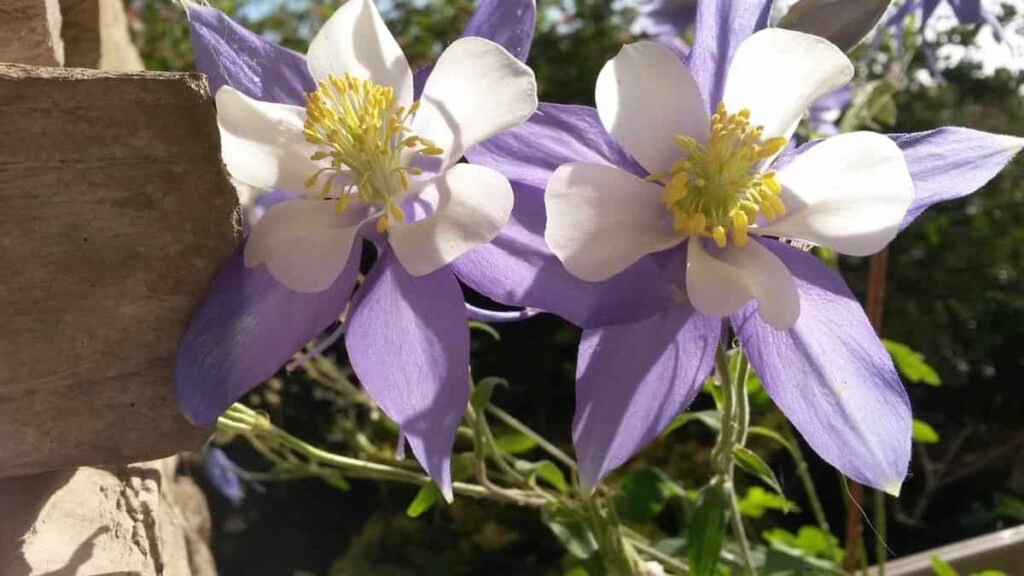
Potting and repotting Columbine
Plant each seedling in a medium-sized container (ten inches). Ensure the container has bottom drainage holes. It can be made with any material like plastic, clay, wood, or stone. Ensure the potting soil is well-draining and of good quality in each container.
Overwintering of Columbine
Columbines can withstand cold temperatures. After they have finished growing, remove any wilted Columbine leaves and cut the stalks to the ground. As well as any new self-seeded plants, flower stalks will grow back next spring. Use mulch or decaying leaves around the plant’s crown to protect it from winter temperatures.
How to get Columbine to bloom
The blooming period for Columbine plants is between mid-spring and early summer. Unlike most Columbines, Rocky Mountain Columbine has a distinctive sweet scent. Columbine’s bloom period can be extended by pinching spent flowers back to above a bud. The resulting seed production drains the plant’s energy if spent blooms are not removed. Columbine plants sown in spring will not bloom their first year. However, plants sown in fall will bloom in their second year.
Common problems with Columbine
A Columbine plant can grow in various climates and efficiently in the home garden. They are susceptible to several problems, including insect activity and fungal infection.
Yellowing leaves
Columbine leaves can turn yellow in areas with hot or dry summers. Maintaining an even moisture level in the soil may allow the plant to survive. However, if the leaves turn yellow or the plant dies, cut it back to its basal leaves. Plants are not dead. There is a possibility that it might not return until the following spring, but it can sometimes reappear in the early fall.
Leaves disappearing
The leaves of a Columbine plant can disappear suddenly one day, and the whole plant will be gone the following day. A slug infestation is evident by this defoliation. The night is the best time for slugs to emerge. You can use an upside-down melon rind or a pan of beer as bait. There will be a strong attraction between both for the slugs. Beer will drown them, and you can dispose of the melon rind infested with slugs. Diatomaceous earth can also be spread around the base. That barrier prevents slugs from crossing.
In case you missed it: How to Grow Cantaloupe Faster: Best Tips to increase Flowering, Fruiting, and Production Yield
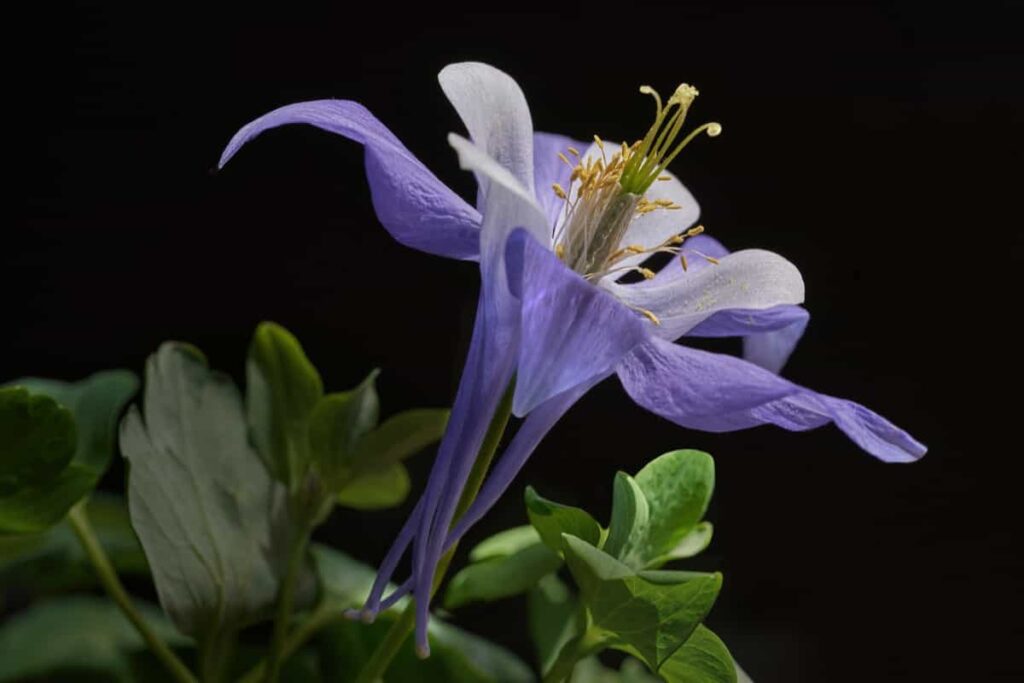
Common pests and diseases in Columbine
Pests in Columbine and their control methods:
| Pest | Cause and symptoms | Control method |
Leaf miners | Little brown/black flies lay their eggs on the bottom sides of the leaves. When the larvae hatch, they eat through the leaves, causing unsightly damage but not killing the plants. | Pick them off and throw them in the trash. Apply neem oil if they are still a problem. |
Sawflies | Aphids cause stunted growth, while sawflies will cause defoliation. | To control aphids and sawflies, spray with ultra-fine horticultural oil or insecticidal soap. |
Diseases in Columbine and their control methods:
Disease | Cause and symptoms | Control method |
Gray mold | Disease symptoms appear as soft grayish-colored, mushy spots on leaves, stems, flowers, and produce. Spots may become covered with gray fungus spores, especially in high humidity. | Copper-Soap fungicides will help by protecting plants from disease spores. |
Powdery mildew | The affected plants have a dusty white coating on leaf surfaces. It can stunt growth or kill plants. | Use Neem oil to control and prevent the spreading of this fungus to other plants. |
Conclusion
Columbine is one of the best options if you want a delicate addition to a cottage garden. Not only does this plant grow well in many climates and under many environmental conditions, but they are also easy to care for, only requiring regular watering, the occasional deadheading, and mulching along with the rest of your perennial plants. While short-lived, lasting just a few years, the seeds will spread on their own to ensure you never run out of gorgeous blooms.
- Crops Grown in Summer Season: Best Choices for Summer Gardening
- Organic Pest Control for Tomato Farming
- How to Maximize Sheep Farming Profit
- Broccoli Varieties: Choosing the Right Cultivars for Your Farm
- How to Raise Pigs in Your Own Backyard: A Comprehensive Guide
- Budget Friendly Sheep Shed Ideas: Cheap and Low-Cost Tips
- How Much Do Cattle Farmers Make: Revenue Streams in Cattle Farming
- Management Pests and Diseases in Your Cotton Field
- Sheep Farming Business Plan for Beginners
- Aquaponic Farming at Home: A Step-By-Step Guide
- Profitable Village Farming Business Ideas in 2024
- High-Yield Aquaculture: Fast-Growing Fish for Farming
- Effective Fish Pond Construction Techniques for Beginners
- Irrigation and Water Management in Pineapple Farming
- Blossom to Harvest: Mastering Flowering and Pollination in Papaya Farming
- Pig Fattening Essentials: From Selection to Sale for Beginners
- Raising Wagyu Cattle: A Complete Guide for Premium Beef Production
- Soil Types and Their Water Holding Capacity
- Optimizing Irrigation Schedules for Coconut Groves for Enhanced Yield
- Espresso Your Garden: Coffee Grounds for Healthier Acid-Loving Plants
- The Best Soil Mix for Snake Plants: How to Mix Your Own Snake Plant Soil
- Green Thumb Success: Expert Tips for Cultivating Greenhouse Beans All Year Round
- Bloom All Year Round: The Ultimate Guide to Indoor Hyacinth Care
- Eco-Friendly Gardening: How to Make Liquid Fertilizer from Kitchen Waste
- Ultimate Guide to Grow Anise in Pots: Explore Seed Propagation to Harvesting
- Guide to Raising Chester White Pigs: Discover Breed Facts to Growth Management
- Mastering the Elegance: The Ultimate Guide to Weeping Cherry Tree Care, Planting, and Maintenance
- Ultimate Guide to Planting Garlic in Grow Bags: Growing Strategies for Beginners
- How to Fix Spider Plant Leaf-Related Problems: Natural and Organic Remedies
- 10 Reasons Why Your Tulsi Plant is Shedding Leaves: Home Remedies and Solutions
- Optimizing Growth and Yield: The Advantages of Palm Bunch Ash Fertilizer
- Utilizing Neem Oil Extract as a Natural Pesticide for Hydrangea
- From Soil to Harvest: Various Ways in Which Farmers Can Use AI Tools
- Steps to Encourage and Induce Citrus Flowers: A Comprehensive Guide
- How to Fix Snake Plant Leaf-Related Issues: Natural and Organic Remedies
- Transform Your Garden into a Fragrant Oasis with Raat Ki Rani (Night Blooming Jasmine)
